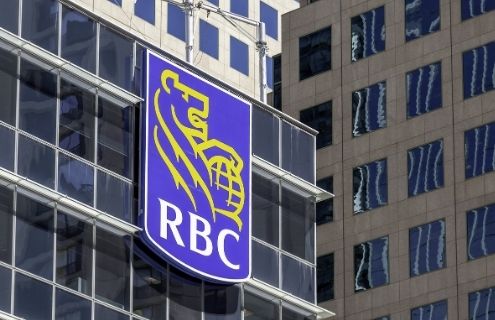RBC I&TS: Canadian pensions buoyed by positive performance in equity markets
29 October 2020 Toronto
 Image: JHVEPhoto - stock.adobe.com
Image: JHVEPhoto - stock.adobe.com
Canadian defined benefit pensions in the RBC Investor & Treasury Services (RBC I&TS) All Plan Universe weathered the COVID-19 induced slowed and continued momentum from Q2, gaining a median of 3 percent in Q3.
The median year-to-date return for Canadian defined benefits plans stood at 5.2 percent for the period ending 30 September.
Canadian equities continued to advance in Q3, with the TSX Composite increasing 4.7 percent.
The Q3 results showed that nine of the sectors in the benchmark generated positive returns, which RBC I&TS said was led by industrials, followed by utilities and materials.
Figures showed that healthcare and energy were in negative territory.
The TSX Composite index was down 3.1 percent on a year-to-date basis while the IT sector outperformed the other economic sectors.
Defined benefit pension plans’ Canadian equities holdings returned a median of 5.2 percent for Q3, surpassing the TSX Composite by 0.5 percent.
Elsewhere, the defined benefit pension plans’ foreign equities holdings returned a median 5.8 percent, with US stocks exceeding their non-North American counterparts.
RBC I&TS said the positive results in the US market were concentrated on select large cap growth stocks.
The MSCI World index returned 5.9 percent, edging out Canadian defined benefit pension foreign equity holdings by a small margin.
The Candian fixed income asset class return in the peer universe was “relatively flat” for the quarter, returning 0.7 percent.
Meanwhile, the FTSE Canada Universe bond index returned 0.4 percent during Q3, compared to 5.9 percent in Q2. RBC I&TS said this was due to central banks around the world continuing to signal their commitment to bolstering their respective economies.
Finally, figures showed that year-to-date Canadian fixed income was the best performing asset class in the peer universe, with a median return of 10.3 percent.
David Linds, managing director and head of asset servicing, Canada at RBC Investor & Treasury Services, said: “Canadian defined benefit pension plans remained in positive territory through Q3 as global markets continued their liquidity-driven climb from the Q1.”
Linds added: “As we head now toward year-end, we are facing potential headwinds such as the resurgence of COVID-19 and uncertainty over the upcoming US presidential election and government support programmes. We can expect an increase in market volatility – as these factors have the potential to discourage global markets and lower investors’ appetites for taking on risk.”
The median year-to-date return for Canadian defined benefits plans stood at 5.2 percent for the period ending 30 September.
Canadian equities continued to advance in Q3, with the TSX Composite increasing 4.7 percent.
The Q3 results showed that nine of the sectors in the benchmark generated positive returns, which RBC I&TS said was led by industrials, followed by utilities and materials.
Figures showed that healthcare and energy were in negative territory.
The TSX Composite index was down 3.1 percent on a year-to-date basis while the IT sector outperformed the other economic sectors.
Defined benefit pension plans’ Canadian equities holdings returned a median of 5.2 percent for Q3, surpassing the TSX Composite by 0.5 percent.
Elsewhere, the defined benefit pension plans’ foreign equities holdings returned a median 5.8 percent, with US stocks exceeding their non-North American counterparts.
RBC I&TS said the positive results in the US market were concentrated on select large cap growth stocks.
The MSCI World index returned 5.9 percent, edging out Canadian defined benefit pension foreign equity holdings by a small margin.
The Candian fixed income asset class return in the peer universe was “relatively flat” for the quarter, returning 0.7 percent.
Meanwhile, the FTSE Canada Universe bond index returned 0.4 percent during Q3, compared to 5.9 percent in Q2. RBC I&TS said this was due to central banks around the world continuing to signal their commitment to bolstering their respective economies.
Finally, figures showed that year-to-date Canadian fixed income was the best performing asset class in the peer universe, with a median return of 10.3 percent.
David Linds, managing director and head of asset servicing, Canada at RBC Investor & Treasury Services, said: “Canadian defined benefit pension plans remained in positive territory through Q3 as global markets continued their liquidity-driven climb from the Q1.”
Linds added: “As we head now toward year-end, we are facing potential headwinds such as the resurgence of COVID-19 and uncertainty over the upcoming US presidential election and government support programmes. We can expect an increase in market volatility – as these factors have the potential to discourage global markets and lower investors’ appetites for taking on risk.”
← Previous industry article
triReduce completes first benchmark conversion with SONIA risk replacement trades
triReduce completes first benchmark conversion with SONIA risk replacement trades
NO FEE, NO RISK
100% ON RETURNS If you invest in only one asset servicing news source this year, make sure it is your free subscription to Asset Servicing Times
100% ON RETURNS If you invest in only one asset servicing news source this year, make sure it is your free subscription to Asset Servicing Times



